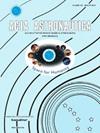小型双酚推进剂发动机气液两相流引起的不稳定燃烧分析
IF 3.1
2区 物理与天体物理
Q1 ENGINEERING, AEROSPACE
引用次数: 0
摘要
超醇双推进剂发动机广泛用于航天器运行。在这些发动机中,燃烧反应是由液相氧化剂和燃料的撞击喷流引发的。在室温和大气压力条件下,最常用的双质燃料肼和一甲基肼以及氧化剂四氧化二氮均为液态。然而,由于这些发动机是在太空真空中运行的,因此在发动机启动后会立即发生低压沸腾,从而不可避免地蒸发掉一部分推进剂。气体与液态推进剂的混合会导致燃烧不稳定,因此尽量减少这种影响对发动机的设计至关重要。特别是,防止高频燃烧不稳定至关重要,因为它会对发动机造成损害。本文通过分析人工诱导不稳定燃烧时燃烧室内的压力,提出了一种激活高频燃烧不稳定性的机制。此外,还阐明了根据所提出的机制建立运行限制的方法,以及收集测试数据的方法。研究结果为双推进剂发动机的设计标准提供了重要指标,有助于空间开发项目的多样化和复杂化。本文章由计算机程序翻译,如有差异,请以英文原文为准。
Analysis of unstable combustion caused by the Gas–Liquid two-phase flow in small hypergolic propellant engines
Hypergolic bipropellant engines are extensively used in spacecraft operations. In these engines, the combustion reaction is initiated by the impinging jets of the oxidizer and fuel in the liquid phase. The most commonly used hypergolic fuels, hydrazine and monomethylhydrazine, as well as the oxidizer, nitrogen tetroxide, are all in liquid state under room temperature and atmospheric pressure conditions. However, as these engines are operated in a space vacuum, a portion of the propellant inevitably evaporates because of low-pressure boiling immediately after engine start-up. The mixing of gas with liquid propellant results in unstable combustion, and minimizing this effect is critical for the engine design. Particularly, preventing high-frequency combustion instability is essential as it can be detrimental to the engine. This paper presents a mechanism that activates high-frequency combustion instability, realized by analyzing the pressure within the combustion chamber during artificially induced unstable combustion. Furthermore, the methodology for establishing operational constraints based on the proposed mechanism is clarified, along with the method for collecting test data. The study findings provide important indicators for the design criteria of bipropellant engines, contributing to the diversification and complexity of space development programs.
求助全文
通过发布文献求助,成功后即可免费获取论文全文。
去求助
来源期刊

Acta Astronautica
工程技术-工程:宇航
CiteScore
7.20
自引率
22.90%
发文量
599
审稿时长
53 days
期刊介绍:
Acta Astronautica is sponsored by the International Academy of Astronautics. Content is based on original contributions in all fields of basic, engineering, life and social space sciences and of space technology related to:
The peaceful scientific exploration of space,
Its exploitation for human welfare and progress,
Conception, design, development and operation of space-borne and Earth-based systems,
In addition to regular issues, the journal publishes selected proceedings of the annual International Astronautical Congress (IAC), transactions of the IAA and special issues on topics of current interest, such as microgravity, space station technology, geostationary orbits, and space economics. Other subject areas include satellite technology, space transportation and communications, space energy, power and propulsion, astrodynamics, extraterrestrial intelligence and Earth observations.
 求助内容:
求助内容: 应助结果提醒方式:
应助结果提醒方式:


